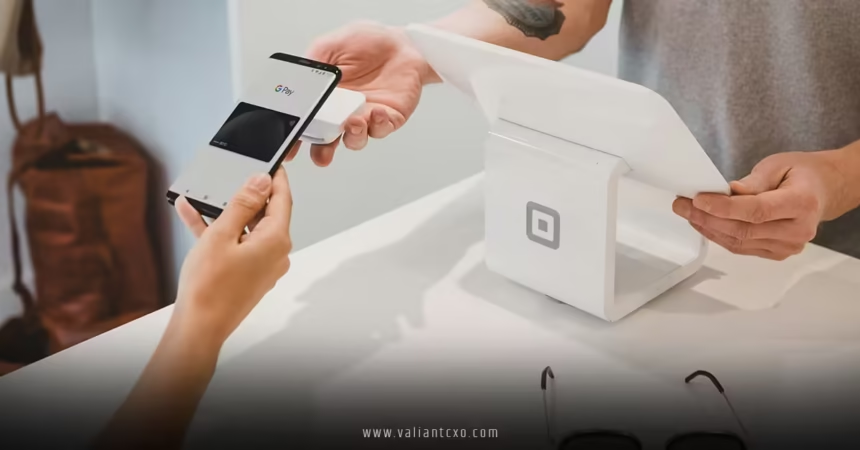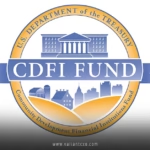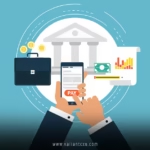How Digital Banking Is Helping Unbanked Americans Gain Access is a game-changer in today’s fast-paced, tech-driven world. Imagine living without a bank account—unable to save securely, pay bills online, or access loans. For millions of unbanked Americans, this is reality. But digital banking is stepping in like a superhero, offering solutions that are reshaping financial inclusion. In this article, we’ll dive into how digital banking is bridging the gap for the unbanked, why it matters, and what it means for the future. Let’s explore this financial revolution!
What Does It Mean to Be Unbanked in America?
Being unbanked means living without a checking or savings account at a bank or credit union. According to the Federal Deposit Insurance Corporation (FDIC), about 5.4% of U.S. households—roughly 7.1 million people—were unbanked in 2023. That’s a lot of folks navigating life without access to basic financial tools. Why does this happen? For some, it’s about distrust in banks. Others face barriers like high fees, lack of nearby branches, or insufficient identification. Rural areas and low-income communities are hit hardest, leaving people stuck in a cash-only world.
So, what’s the big deal? Without a bank account, you’re locked out of digital payments, credit-building opportunities, and even simple things like direct deposit. It’s like trying to play a video game without a controller—frustrating and limiting. But here’s where digital banking swoops in to save the day.
How Digital Banking Is Helping Unbanked Americans Gain Access Through Accessibility
Mobile Apps: Banking at Your Fingertips
Digital banking is like a pocket-sized bank branch. With just a smartphone, unbanked Americans can open accounts, deposit checks, and manage money without stepping foot in a physical bank. Apps like Chime, Varo, and Current are leading the charge, offering no-fee accounts that don’t require minimum balances. For someone who’s never had a bank account, this is huge. No more trekking to a distant branch or worrying about hidden fees eating up your paycheck.
Picture this: a single mom in a rural town, juggling two jobs, can now deposit her paycheck by snapping a photo on her phone. That’s how digital banking is helping unbanked Americans gain access—by meeting people where they are, literally and figuratively.
No Physical Branches, No Problem
Traditional banks rely on brick-and-mortar locations, but what if you live miles away from one? Digital banks don’t need physical branches, making them a lifeline for rural communities. They operate entirely online, using secure cloud-based systems to handle everything from account setup to customer service. This eliminates the geographic barriers that often keep unbanked Americans on the sidelines.
Breaking Down Financial Barriers
Low or No Fees: A Game-Changer for the Unbanked
One of the biggest reasons people avoid banks is fees. Monthly maintenance fees, overdraft charges, and minimum balance penalties can feel like a slap in the face. Digital banks are flipping the script by offering fee-free or low-cost accounts. For example, many fintech apps provide free checking accounts with no minimum balance requirements, making banking accessible to those living paycheck to paycheck.
How Digital Banking Is Helping Unbanked Americans Gain Access lies in its ability to remove these financial hurdles. It’s like clearing the fog from a windshield—suddenly, you can see the road ahead.
Simplified Account Setup
Ever tried opening a bank account without a government-issued ID or proof of address? It’s like trying to board a plane without a ticket. Many unbanked Americans face this issue, especially immigrants or those experiencing homelessness. Digital banks simplify the process by accepting alternative forms of ID, like a Social Security number or even a selfie with a utility bill. This flexibility is a key way how digital banking is helping unbanked Americans gain access to financial services.
Building Trust in a Skeptical Community
Overcoming Distrust in Financial Institutions
Let’s be real—banks haven’t always had the best reputation. Hidden fees, predatory lending, and complex terms have left many Americans, especially in underserved communities, wary of financial institutions. Digital banks are working to rebuild trust by being transparent. Clear terms, no surprise fees, and user-friendly interfaces make banking feel less like a trap and more like a tool.
For instance, companies like Chime emphasize transparency with no hidden fees and easy-to-understand features. This approach is critical in showing unbanked Americans that banking can be safe and straightforward.
Financial Education Through Apps
Digital banking isn’t just about accounts; it’s about empowerment. Many apps include built-in tools to teach budgeting, saving, and credit-building. Imagine an app that nudges you to save $5 a week or explains credit scores in plain English. These features help unbanked individuals not only access banking but also understand how to use it effectively. By offering education alongside services, digital banking is helping unbanked Americans gain access to a brighter financial future.
How Digital Banking Is Helping Unbanked Americans Gain Access to Credit
Credit-Building Opportunities
Without a bank account, building credit is nearly impossible. No credit? No loans, no mortgages, no upward mobility. Digital banks are changing this by offering secured credit cards or credit-builder loans that don’t require a traditional credit history. For example, some apps let you “borrow” small amounts and pay them back over time, reporting your progress to credit bureaus.
Think of it like planting a seed. Each on-time payment helps your credit score grow, opening doors to bigger financial opportunities. This is a cornerstone of how digital banking is helping unbanked Americans gain access to the credit system.
Microloans and Instant Cash Advances
Sometimes, life throws curveballs—a car repair, a medical bill, or rent due before payday. Digital banks often provide small, short-term loans or cash advances with lower fees than payday lenders. These microloans can be a lifeline for unbanked Americans, offering a safer alternative to predatory lending. It’s like having a friend who spots you $50 without charging you an arm and a leg.
The Role of Technology in Financial Inclusion
AI and Machine Learning: Personalizing the Experience
Digital banks use artificial intelligence (AI) to tailor services to individual needs. For example, AI can analyze spending patterns and suggest ways to save, or flag suspicious transactions to protect users. This personalization makes banking feel less intimidating and more like a helpful companion. By leveraging technology, digital banking is helping unbanked Americans gain access to services that feel custom-made for them.
Blockchain and Security
Security is a top concern for anyone hesitant to bank online. Digital banks use advanced encryption and, in some cases, blockchain technology to ensure transactions are safe. Blockchain is like a digital vault—once a transaction is recorded, it’s nearly impossible to tamper with. This level of security reassures unbanked Americans that their money is protected, encouraging them to take the leap into digital banking.
Challenges and Limitations
Digital Divide: Access to Technology
While digital banking is a powerful tool, it’s not a cure-all. The digital divide—lack of access to smartphones or reliable internet—can still exclude some unbanked Americans. Rural areas and low-income households may struggle with connectivity, making it harder to benefit from digital banking. Addressing this gap is crucial to ensure everyone can experience how digital banking is helping unbanked Americans gain access.
Regulatory Hurdles
Digital banks operate in a complex regulatory landscape. Ensuring compliance with federal laws while keeping services accessible is a balancing act. For instance, anti-money laundering rules require identity verification, which can still be a barrier for some. As digital banks grow, they must navigate these challenges to keep serving the unbanked effectively.
The Future of Digital Banking for the Unbanked
Expanding Services
The future looks bright. Digital banks are already exploring new ways to serve the unbanked, like integrating cryptocurrency wallets or offering investment options tailored to low-income users. Imagine a world where even someone with $100 can start investing in stocks or crypto. This evolution will further amplify how digital banking is helping unbanked Americans gain access to wealth-building tools.
Partnerships with Community Organizations
Some digital banks are teaming up with nonprofits and community groups to reach unbanked populations. These partnerships provide financial literacy workshops, free smartphones, or even Wi-Fi hotspots to bridge the digital divide. It’s like building a bridge to connect isolated communities to the financial mainland.
Conclusion
How Digital Banking Is Helping Unbanked Americans Gain Access is more than a buzzphrase—it’s a movement. By offering low-cost, accessible, and trustworthy financial tools, digital banks are empowering millions to take control of their finances. From mobile apps to credit-building opportunities, these platforms are tearing down barriers and building bridges to inclusion. The journey isn’t over, but the progress is undeniable. If you or someone you know is unbanked, now’s the time to explore digital banking. Take that first step—your financial future is waiting!
FAQs
1. What is the unbanked population, and how does digital banking help them?
The unbanked are people without bank accounts, often due to fees or lack of access. How Digital Banking Is Helping Unbanked Americans Gain Access involves providing low-cost, mobile-friendly accounts that don’t require physical branches or complex requirements.
2. Are digital banks safe for unbanked Americans to use?
Yes, most digital banks use advanced encryption and security measures like blockchain to protect users. Always choose FDIC-insured platforms, like those listed on the FDIC website, to ensure your money is safe.
3. Can digital banking help improve my credit score?
Absolutely! Many digital banks offer credit-builder loans or secured cards that report to credit bureaus, a key way how digital banking is helping unbanked Americans gain access to better financial opportunities.
4. What if I don’t have reliable internet for digital banking?
The digital divide is a challenge, but some digital banks partner with community organizations to provide Wi-Fi or devices. Check with local nonprofits for resources to get connected.
5. How do I choose the right digital bank?
Look for no-fee accounts, FDIC insurance, and user-friendly apps. Research reviews and compare features to find a bank that fits your needs, ensuring how digital banking is helping unbanked Americans gain access works for you.
For More Updates !! : valiantcxo.com


